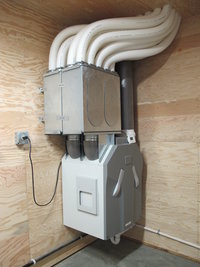How a Heat Recovery Ventilation System Operates
12/24/2014
The heat recovery ventilation system consists of the central heat recovery ventilation unit and the air distribution system to the individual rooms. Via the air ducts, the used air (extract air) is discharged and fresh air (supply air) is supplied.
An external air intake provides fresh air for the ventilation unit. Depending on the design, the outside air reaches the heat recovery ventilation unit directly or via an optional ground heat exchanger. A ground heat exchanger is an underground pipe system which transports
Read More



